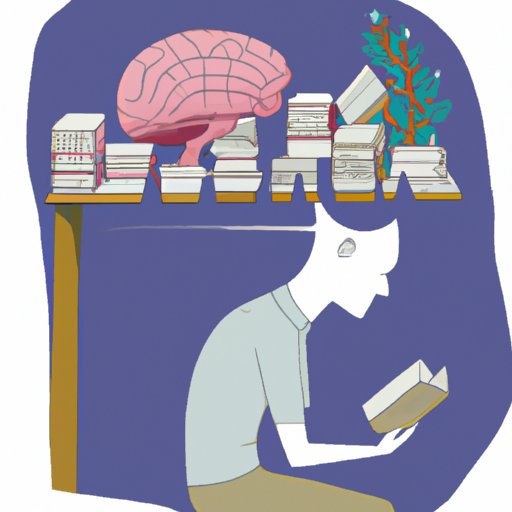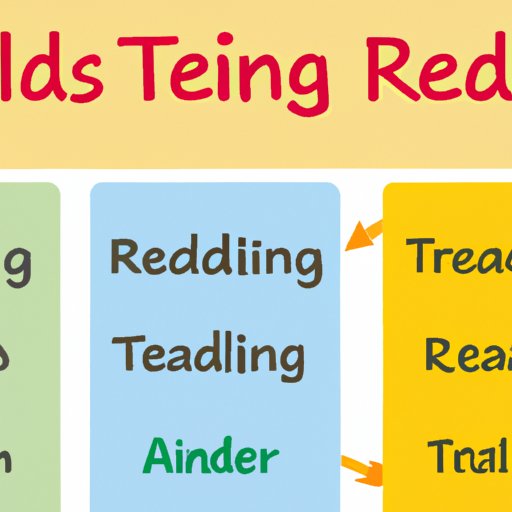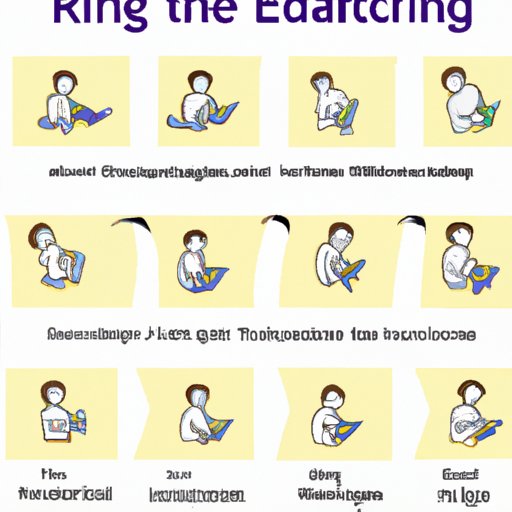Introduction
Reading is a complex process that involves the integration of multiple cognitive processes. It is the foundation of all academic success and remains a critical skill in today’s society. With the advancement of technology, the way we read has changed over time, yet the science of reading has remained largely unchanged. This article will explore what teachers should know about the science of reading, from exploring the neuroscience behind reading to understanding the different developmental stages and creating an effective classroom environment for reading.

Exploring the Neuroscience Behind Reading
Research has shown that reading is a highly complex process that involves the coordination of multiple parts of the brain. According to a study conducted by the National Institute of Health (NIH), “the brain areas associated with reading include the left inferior frontal gyrus, which is responsible for decoding written words; the left temporal-parietal junction, which is important for language processing; and the left posterior fusiform gyrus, which is involved in recognizing visual patterns.” In addition, research has found that reading involves both top-down and bottom-up processes. Top-down processes are those that involve higher-level cognitive skills such as comprehension, while bottom-up processes consist of lower-level skills such as phonemic awareness and phonics.
How to Utilize Evidence-Based Instructional Strategies
In order to effectively teach students how to read, it is important for teachers to understand and utilize evidence-based instructional strategies. According to the International Dyslexia Association, “evidence-based instruction is the use of scientifically validated instructional approaches that have been proven to be effective in helping students learn to read.” As such, teachers should be aware of the different instructional strategies that are supported by research and use them to guide their teaching. For example, teachers should utilize explicit instruction, which involves providing clear and direct explanations of concepts, modeling, and guided practice.
In addition to utilizing evidence-based instructional strategies, teachers should also examine the effects of different strategies on student performance. By doing so, they can identify which strategies are most effective and tailor their instruction accordingly. Research has shown that explicit instruction is more effective than implicit instruction, which relies heavily on memorization and repetition. Therefore, teachers should focus on utilizing explicit instruction when teaching their students how to read.

Teaching Different Reading Strategies for Different Learners
It is important for teachers to recognize that each student learns differently and therefore requires different instructional strategies. For example, some students may benefit from visual strategies such as graphic organizers or color-coded texts, while others may find auditory strategies such as rhyming or chanting helpful. Additionally, teachers should incorporate individualized instruction into their teaching to ensure that they are addressing the unique needs of each student. By doing so, they can better meet the needs of all learners and improve student outcomes.
Applying the Five Components of Reading
The five components of reading, which include phonemic awareness, phonics, vocabulary, fluency, and comprehension, are essential for developing effective reading skills. Phonemic awareness is the ability to identify, manipulate, and blend sounds in spoken language. Phonics is the understanding of letter-sound relationships and how these relate to the pronunciation and meaning of words. Vocabulary refers to the knowledge of words and their meanings. Fluency is the ability to read accurately, quickly, and with expression. Finally, comprehension is the ability to understand and make sense of what is read. All five components are necessary for successful reading, and teachers should strive to incorporate them into their instruction.

Understanding the Developmental Stages of Reading
In order to effectively teach reading, it is important for teachers to understand the different developmental stages of reading. The pre-reader stage is when children begin to acquire basic language skills such as listening, speaking, and understanding. The emergent reader stage is when children begin to recognize familiar words and attempt to sound out unfamiliar words. The transitional reader stage is when children are able to read connected text with increasing accuracy. Lastly, the fluent reader stage is when children are able to read with speed, accuracy, and expression. By understanding the different developmental stages of reading, teachers can better identify where their students are in the process and adjust their instruction accordingly.
Creating an Effective Classroom Environment for Reading
In order to create an effective classroom environment for reading, teachers should strive to establish a positive learning environment. This can be done by creating a safe and supportive atmosphere in which students feel comfortable taking risks and making mistakes. Additionally, teachers should encourage active participation by engaging students in meaningful conversations and activities. Finally, teachers should take advantage of technology and incorporate it into their instruction. By doing so, they can provide students with access to a variety of resources and tools that can help them become better readers.
Conclusion
Reading is a complex process that requires a deep understanding of the science behind it. From exploring the neuroscience behind reading to understanding the different developmental stages and creating an effective classroom environment for reading, there are many aspects of the science of reading that teachers should be aware of. By gaining a comprehensive understanding of the science of reading, teachers can equip their students with the knowledge and skills needed to become successful readers.
(Note: Is this article not meeting your expectations? Do you have knowledge or insights to share? Unlock new opportunities and expand your reach by joining our authors team. Click Registration to join us and share your expertise with our readers.)
